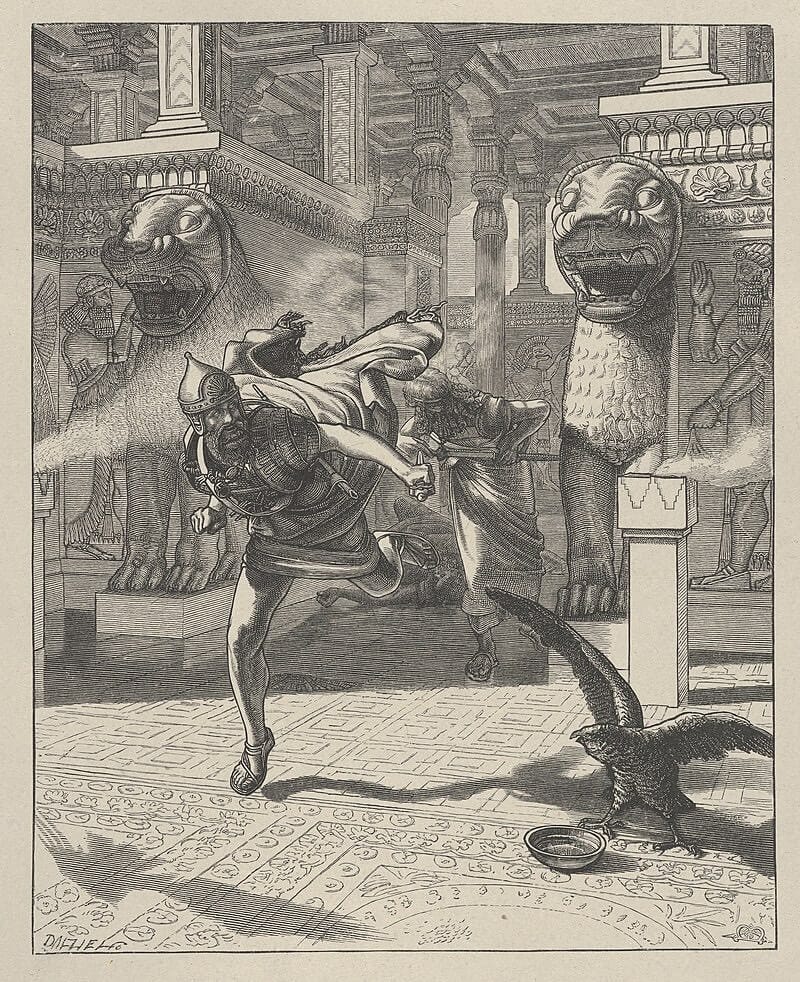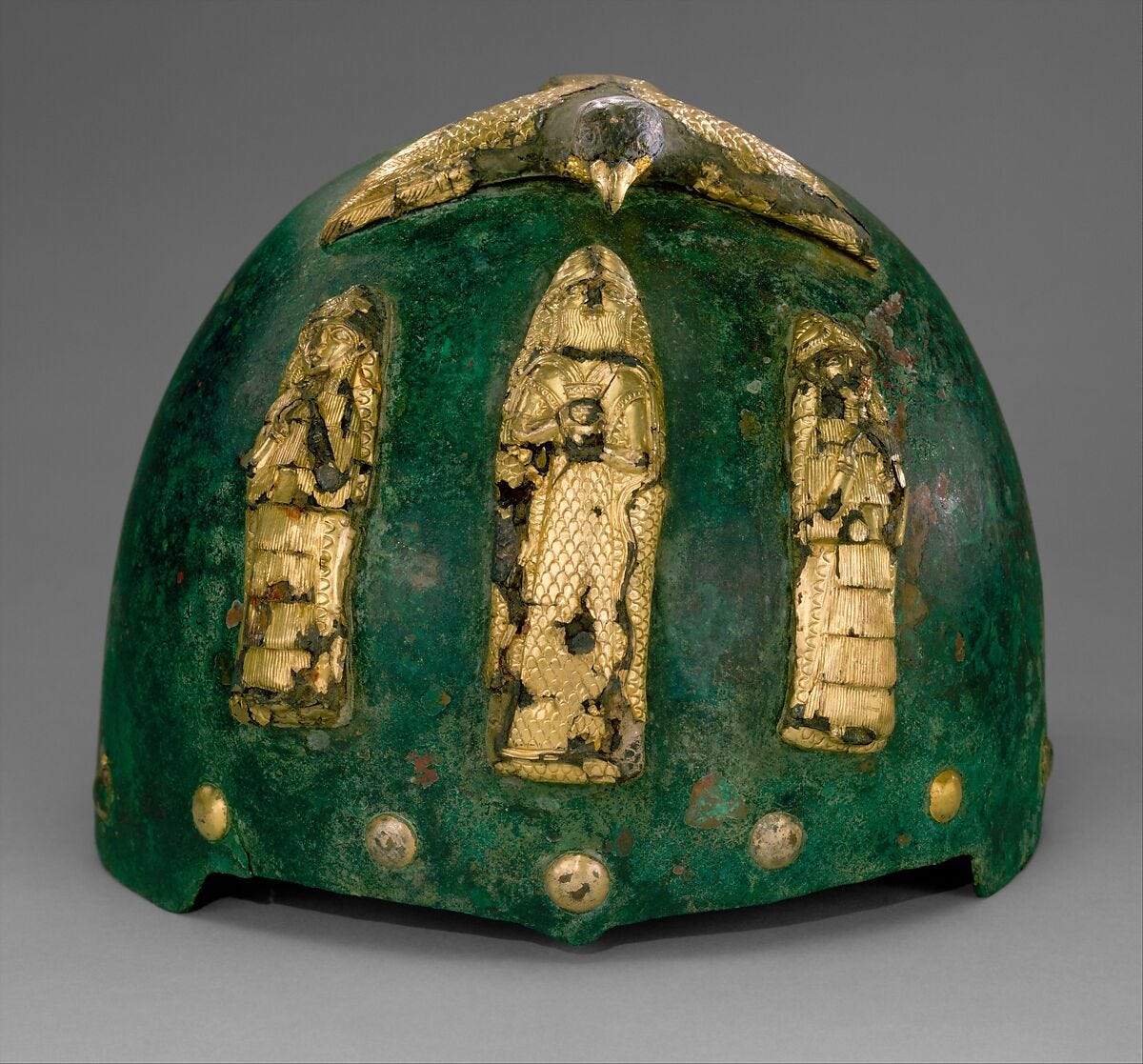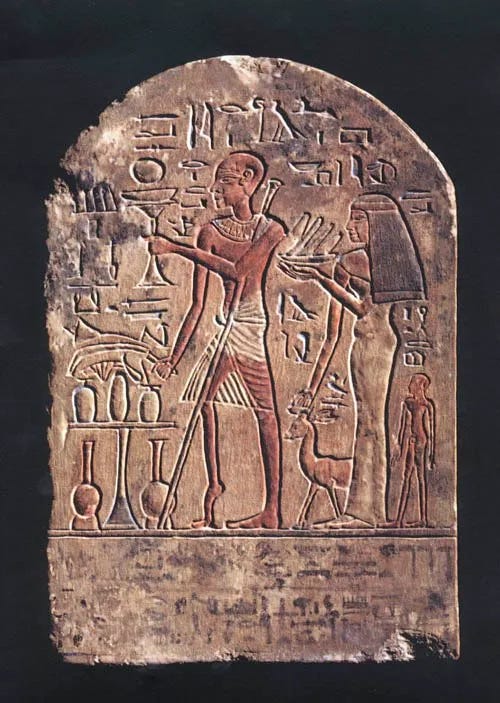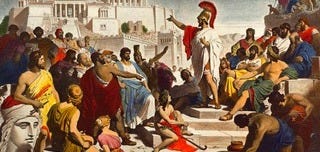ANE Today, 15 May 2025
The Assassination of Sennacherib and the Assyrian Civil War, the Friends of ASOR Chicago Tour, our Object of the Week, plus the usual round-up of news, books, and other media.
A Failed Coup: The Assassination of Sennacherib and the Assyrian Civil War of 681 BC

By Christopher Jones
On the twentieth day of the month of Tebet (January 22, 680 BC according to the Julian calendar), the Assyrian king Sennacherib was set upon by several of his sons and stabbed to death somewhere within the main citadel of the royal city of Nineveh. It was one of the most dramatic events in all of ancient history: The great king who had besieged Jerusalem and destroyed Babylon was dead. He was killed by the people he should have been able to trust the most, in the place where he should have been the most safe. The immediate result was a civil war, as his youngest son and designated heir Esarhaddon fought against his assassin brothers to secure the throne. In the long term, the assassination marks the beginning of the end, the first of many conflicts over royal succession that would help destroy the empire from within.
Friends of ASOR Chicago Tour
Registration is now open for the first Friends of ASOR tour in Chicago! Join us on September 18 and 19 for an exclusive behind-the-scenes experience. We will be kicking off our two-day jaunt on September 18 with the grand opening of a special exhibit on Megiddo at the iconic Institute for the Study of Ancient Cultures, followed by a walking tour of monuments and landscapes passing through Grant Park, the Museum Campus, and the Gold Star Families Memorial. On Friday, September 19, we will visit the Greek, Roman, and Egyptian galleries at the impressive Art Institute of Chicago to explore significant new developments and to learn about material little seen by the public. After lunch, we’ll continue our tour to the renowned Field Museum of Natural History, home to the largest and most complete Tyrannosaurus rex skeleton of its kind, among remarkable collections and exhibitions.
Registration and details can be found here.
In the News:
Name diversity sheds light on social patterns in ancient Hebrew kingdoms (Phys.org)
Karatepe Aslantas inscriptions enter UNESCO Memory of World Register (Türkiye Today)
Bronze Age leprosy hitched rides along ancient copper and pottery trade route (Science)
How did sport become so popular? The ancient history of a modern obsession. (The Conversation)
Iraq’s important archaeological sites under threat from real estate development (The Art Newspaper)
The Cairo Geniza: how a dusty attic changed Jewish history forever (Aish.com)
Ancient marble sculpture workshop from the Hellenistic period discovered on the island of Paros with numerous unfinished statue (LBV)
Object of the Week:

New Books to Explore:
Alexander the Great in Jerusalem: Myth & History, by Ory Amitay
The Idea of the City in Late Antiquity: A Study in Resilience, by Andrew Wallace-Hadrill
The Arsacids of Rome: Misunderstanding in Roman-Parthian Relations, by Jake Nabel (open access!)
The Rise of the Talmud, by Moulie Vidas
Book Review: The Cleopatras: The Forgotten Queens of Egypt, by Lloyd Llewellyn-Jones. (BMCR)
Museum Exhibits:
Latest Podcasts:
The Destruction of Mankind (Ancient/Now)
Latest YouTube:
A Mummy Wrapping of Petosiris: A Two-Thousand-Year Journey (Getty Museum)
At-Turaif: The Birthplace of Saudi Arabia (Amazing Places on Our Planet)
Proto Sea Peoples? Pirates and Brigands of the Amarna Age (Dig)
Consider taking this short survey to give us feedback on ANE Today.
In Case You Missed It:
The Study of Disability in Ancient Egypt and Beyond

By Alexandra F. Morris
Disability has always been a part of human history, including in ancient Egypt. In fact, due to the environment in Egypt, such as the arid desert in which the ancient Egyptians built their tombs, we arguably have more evidence for disability than in many other ancient cultures. However, until recently (the past 10 years), the subject has rarely been studied in Egyptology or in a broader ancient world studies context. Read more here.
Sponsored: BASONOVA Lecture, The Second Athenian Confederacy
Sunday, May 18, 2025 at 3 p.m.: Nicholas Cross, United States Naval Academy
Sponsored by the Hellenic Society Prometheas
Friends of ASOR is pleased to share information on BASONOVA & BAF lectures. In 378 BCE, thirty-six years after their defeat in the Peloponnesian War and the dismantling of their empire, the Athenians took the bold step of reconstituting their hegemony over the Aegean world.
But contrary to the view that the Second Athenian Confederacy was an attempt to revive Athens’ imperial past, this new organization was a bold experiment in inclusive geopolitics. In its political, financial, and military institutions, the Confederacy differed from its fifth-century predecessor by allowing a greater role for the seventy allies under Athenian leadership.
This presentation will employ an innovative approach to understanding interstate relations in the late Classical period. Through an examination of literary and epigraphical evidence, it will explore the origins of the Second Athenian Confederacy, the mechanisms for its operations, and the reasons for its downfall between the 350s and 338 BCE.
This event will be held at Pistone’s Italian Inn, 6320 Arlington Blvd., Falls Church, VA 22042. Luncheon will be served at 2 p.m. Register here.
Enjoy what you’re reading? Consider supporting ANE Today through a once-off or recurring donation to ASOR.
Published with the assistance of The Lanier Theological Library and Stevan Dana






Thanks for sharing this! This is fascinating. I learned quite a bit about the assassination of Sennacherib and the Assyrian Civil War. I suppose even when you're a king, you're not safe. A knife is always at your back.